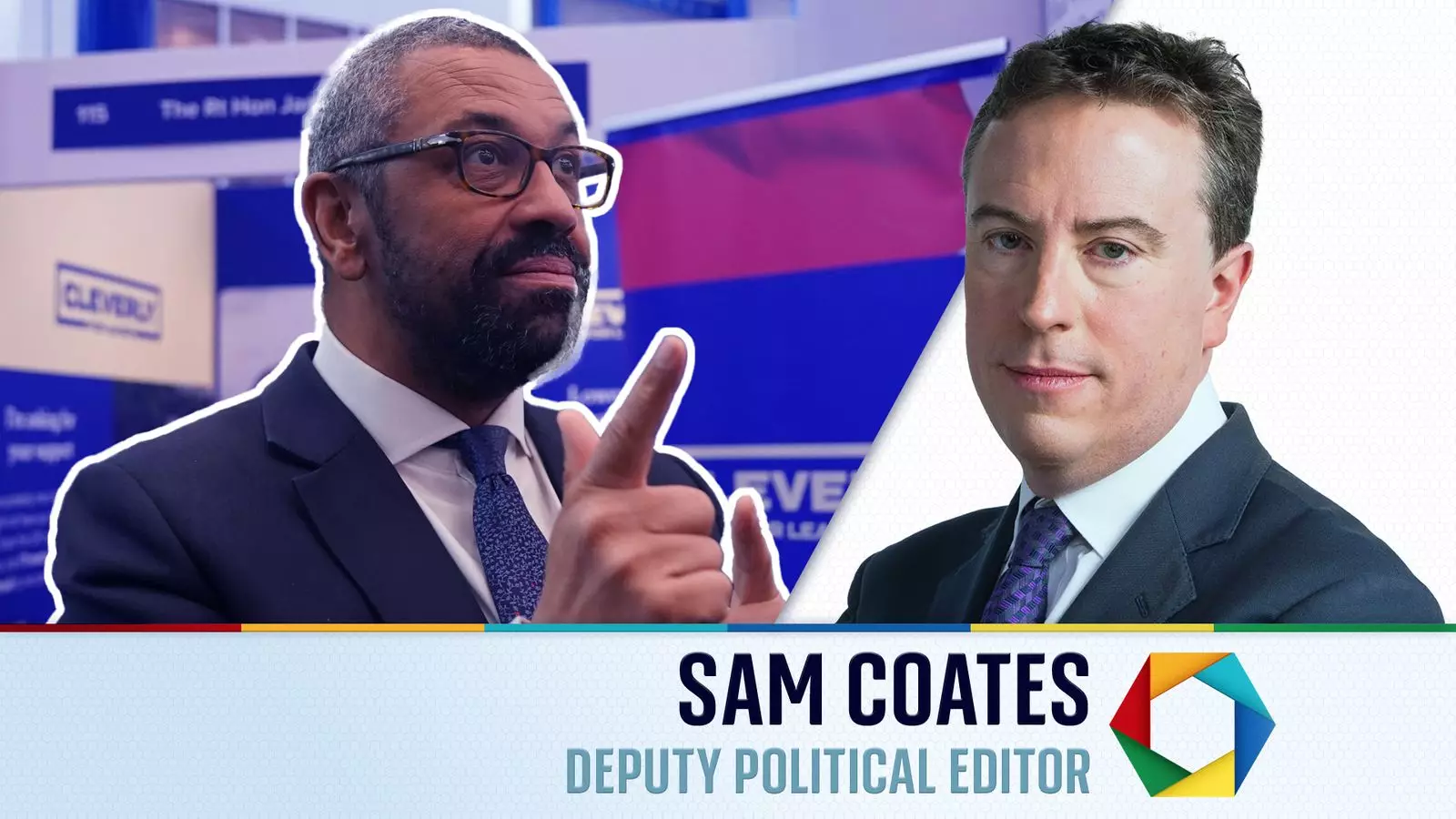The evolution of political leadership contests often makes for fascinating observation, particularly when it involves a party as ideologically diverse as the Conservative Party. Recent developments in the ongoing Tory leadership race have not only highlighted the intricacies of party dynamics but also raised questions about what qualities members truly value in a leader. This article delves into the latest conference outcomes, analyzes candidate positioning, and offers insights into the implications for the future of the Tory leadership.
The Surge of James Cleverly and Its Implications
James Cleverly’s meteoric rise in the Tory leadership contest marks a pivotal moment in shaping the future of the party. His recent conference speech, characterized by warmth and strategic messaging, has resonated with a wide array of party members. Cleverly’s performance showcases a masterclass in political oratory, generating enthusiasm among the supporters while bolstering party morale in a landscape riddled with uncertainty.
However, the ascent of Cleverly doesn’t imply an undeterred path to victory. The political landscape remains fluid, and while he showcased exceptional communication skills, the enduring wish of party members extends beyond mere performance at conferences. They seek intrinsic qualities such as integrity, a reflection of conservative values, and a genuine commitment to the ideological bedrock of the Party.
Cleverly’s ability to galvanize support is impressive, yet the shadows of doubt loom large. The competitive nature of this race and the impending vote from the party’s 170,000 members suggests that Cleverly still faces formidable challenges as multiple factions within the party vie for dominance.
Kemi Badenoch’s candidacy illustrates a strategic pivot aimed at consolidating the right-wing faction of the Conservative Party. Her recent pronouncements underscore a desire to coalesce support specifically from those aligned with more traditional Tory values. However, this approach may alienate moderate conservatives, particularly those who gravitated towards Tom Tugendhat’s more centrist vision.
Badenoch’s bold maneuvering to attract the support of European Research Group (ERG) members is noteworthy. Despite her efforts, historical tensions stemming from previous leadership battles raise questions about her viability in uniting the right against a background of prior discord. The contrast in her strategies compared to more centrist contenders outlines the complexities inherent in the Conservative Party’s internal divisions.
However, it’s essential to analyze the efficacy of Badenoch’s move: while it may rally some factions, it runs the risk of solidifying opposition from moderates who are vital in a general election. This tug-of-war encapsulates the duality of reach versus unity within the Tory base.
As the contest progresses, Robert Jenrick appears to be losing traction, with a notable decrease in support among party members. Initial forecasts from Jenrick’s camp projected a stronger showing, yet the reality fell short, indicating perhaps a disconnect between expectation and reception. This decline could be attributed to a lackluster conference performance, suggesting that voter sentiment is swaying as the race evolves.
Jenrick’s positioning contrasts with Cleverly’s momentum. As party members grapple with their voting choices, the shadow of Jenrick’s underperformance grows ever larger. This dynamic not only puts him at risk but also invites speculation about potential tactical alliances among the leading candidates.
In the intricate game of political strategy, is Cleverly aiming to face off against a weakened Jenrick in subsequent rounds to ensure a more straightforward path to victory? The implications of such calculations could reframe how candidates approach their messaging and alliances in the days to come.
Polling has revealed vital insights into what Conservative members value in a leader. Factors such as honesty and integrity rank paramount, overshadowing election viability. This finding underscores the potential pitfalls for candidates who fail to genuinely connect with these aspirations of party members.
Furthermore, the stark contrast between popularity among MPs and the broader public adds a layer of complexity to the contest. As party members prioritize intrinsic values over electoral gains, candidates must navigate these nuances to secure not only a position but also a mandate that resonates with grassroots sentiment.
As the leadership race approaches its climax, the unpredictable landscape in which candidates are operating suggests that the outcome is far from predetermined. The wide-ranging ambitions and imperfections of each contender mark an intricate tapestry of Tory politics poised for a critical transformation.


Leave a Reply